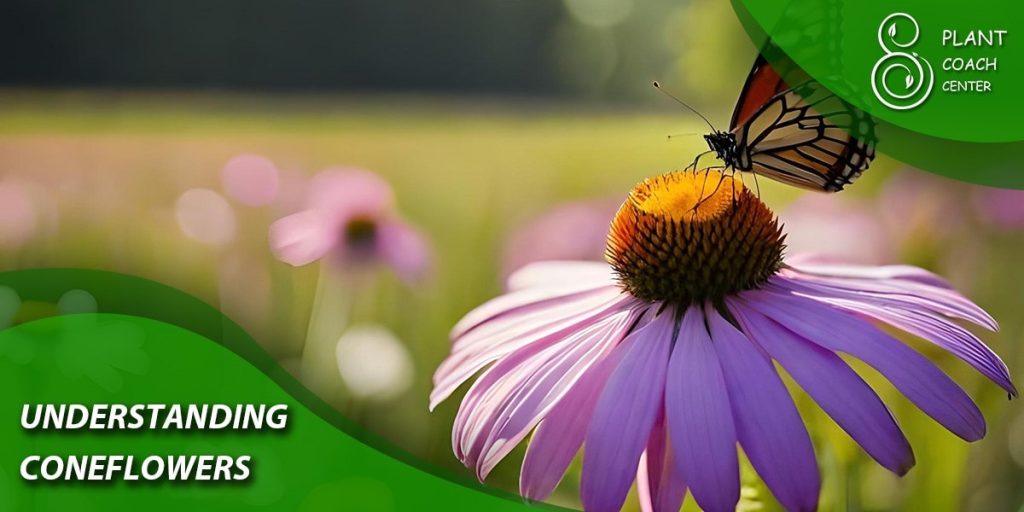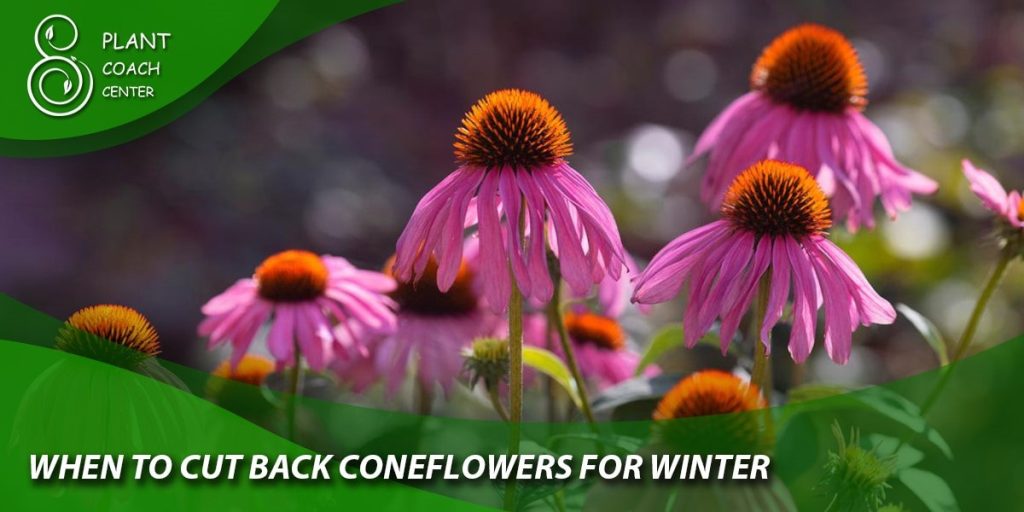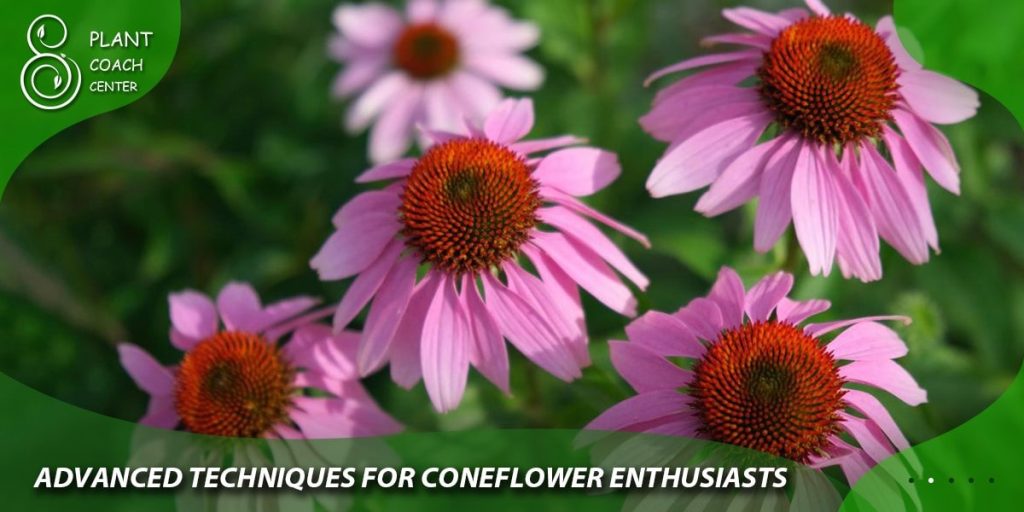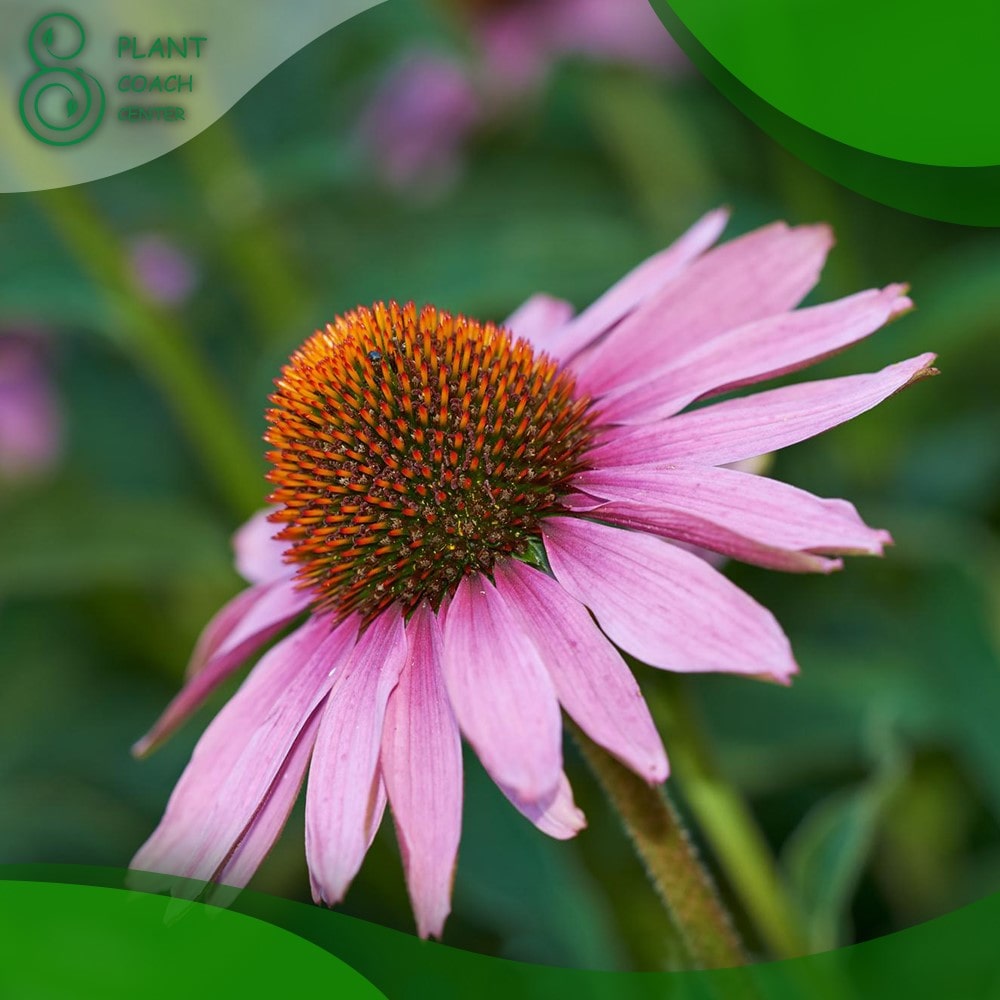When to Cut Back Coneflowers?
Plant lovers around the world have been increasingly turning to plant coaching to learn the art of nurturing their favorite botanical companions. Coneflowers (Echinacea) have gained immense popularity due to their vibrant colors, hardiness, and medicinal properties.
This comprehensive guide aims to delve into the art of plant coaching while focusing on when and how to cut back coneflowers for winter. Let’s embark on this green journey and discover the secrets to thriving coneflowers!
Understanding Coneflowers
Coneflowers, native to North America, belong to the genus Echinacea and are beloved for their daisy-like appearance, featuring prominent cone-shaped centers. These perennial beauties come in various species and cultivars, each with its unique characteristics and color variations. Some popular varieties include Echinacea purpurea, Echinacea pallida, and Echinacea paradoxa.

Different Varieties of Coneflowers
Coneflowers come in an array of colors, from traditional pink and purple to more exotic shades like yellow and orange. Understanding the different species and cultivars allows gardeners to select the perfect coneflowers for their landscape.
Coneflower Lifecycle and Growth Habits
To provide the best care, it’s essential to comprehend the lifecycle and growth habits of coneflowers. From seed germination to flowering and dormancy, each stage demands specific attention and care.
Coneflower Care throughout the Year
Seasonal Care Overview
Coneflowers have different needs throughout the year. Understanding seasonal care is vital for maintaining healthy and vigorous plants. Let’s explore the care routines for spring, summer, and fall.
Spring Care for Coneflowers
- Preparing Coneflowers for Spring Growth
- Clearing debris and old plant material around coneflowers.
- Checking for signs of winter damage and assessing overall plant health.
- Soil Preparation and Fertilization
- Amending soil with organic matter to enhance nutrient availability.
- Applying balanced fertilizer to support initial growth.
- Watering Techniques and Irrigation
- Providing consistent moisture, especially during dry spells.
- Avoiding overwatering to prevent root rot.
- Controlling Weeds and Pests in Spring
- Using natural methods to combat weeds without harming coneflowers.
- Identifying and addressing early pest infestations.
Summer Care for Coneflowers
- Maintaining Optimal Growth Conditions
- Ensuring sufficient sunlight and well-drained soil for healthy growth.
- Monitoring temperature and providing shade during extreme heat.
- Pruning and Deadheading Strategies
- Regular deadheading to promote continuous blooming.
- Cutting back spent flowers to prevent seed formation and encourage new buds.
- Dealing with Common Coneflower Diseases
- Identifying symptoms and diagnosing diseases promptly.
- Implementing appropriate treatments or natural remedies.
- Maximizing Flower Production
- Encouraging lateral shoots and branching for more abundant blooms.
- Providing supplemental nutrients and foliar feeding if necessary.
Fall Care for Coneflowers
- Preparing Coneflowers for Winter
- Gradually reducing fertilizer application to prepare plants for dormancy.
- Allowing seedheads to form to attract birds and wildlife.
- Fertilization and Soil Amendments
- Applying a light layer of compost to enrich the soil.
- Avoiding excessive nitrogen to prevent lush growth susceptible to winter damage.
- Protection from Frost and Cold Temperatures
- Using mulch to insulate roots and protect from frost heaving.
- Covering plants during frosty nights with cloth or burlap.
- Harvesting Coneflower Seeds
- Knowing the right time to harvest and collect seeds for propagation.
- Properly storing collected seeds for future use.
When to Cut Back Coneflowers for Winter
Importance of Cutting Back Coneflowers
Cutting back coneflowers before winter plays a crucial role in their overall health and longevity. Proper pruning ensures that the plant concentrates its resources on essential areas, reducing vulnerability to winter stressors.

Factors to Consider Before Cutting Back
Before pruning coneflowers for winter, several factors should be taken into account to make the process effective and beneficial for the plants.
- Climate and Hardiness Zones
- Consider the local climate and hardiness zone to determine the timing and extent of pruning.
- Coneflowers in colder regions might require more substantial pruning for protection.
- Coneflower Variety and Growth Habits
- Different coneflower varieties have varying growth patterns and flowering times.
- Tailor the pruning approach to suit each plant’s specific characteristics.
- Disease and Pest Prevention
- Pruning infected or infested parts can help prevent the spread of diseases and pests.
- Consider plant health before winterizing.
Signs Indicating the Need to Cut Back Coneflowers
Observing your coneflowers carefully will give you clues about when it’s time to cut them back for winter.
- Faded Flowers: When the vibrant petals of coneflowers start to fade and lose their luster, it’s a sign that the plant is transitioning to dormancy.
- Yellowing Foliage: Yellowing or browning of leaves indicates the plant is preparing to shed foliage for winter.
- Stem Deterioration: As the stems become woody and less flexible, it’s an indicator that the plant is entering its dormant phase.
Best Practices for Cutting Back Coneflowers
- Timing the Pruning Operation
- Wait until late fall or early winter after the first hard frost to prune coneflowers.
- This allows the plant to benefit from its foliage and stems for as long as possible.
- Proper Pruning Techniques
- Use clean and sharp pruning shears to prevent unnecessary damage to the plant.
- Cut the stems at a 45-degree angle just above a healthy bud or node.
- Sterilization of Pruning Tools
- Disinfect pruning tools between cuts to prevent the spread of diseases.
- Wiping the blades with rubbing alcohol or a bleach solution is sufficient.
- Disposing of Pruned Material
- Remove and dispose of the pruned plant material away from the garden.
- This reduces the risk of pests and diseases overwintering near healthy plants.
Winter Protection Measures for Coneflowers
- Mulching and Insulating the Soil
- Apply a layer of mulch around the base of coneflowers to regulate soil temperature.
- Mulch also helps retain moisture and protect roots from harsh winter conditions.
- Covering Coneflowers with Protective Material
- Use frost blankets or burlap to cover coneflowers during extreme cold spells.
- Ensure the covering is secured, so it doesn’t cause damage to the plant.
- Container-Grown Coneflowers in Winter
- For potted coneflowers, move them to a sheltered location, such as a garage or shed.
- Provide minimal watering during dormancy to avoid root rot.
Monitoring and Care during Winter
- Checking on Coneflowers Periodically
- Take occasional walks through your garden to inspect coneflowers during winter.
- Look for signs of stress or damage, especially after severe weather events.
- Watering and Moisture Management
- Avoid overwatering during winter, as the plant’s water needs are significantly reduced.
- Water only when the soil is dry and temperatures are above freezing.
- Identifying and Treating Winter Diseases
- If signs of disease appear, take immediate action to prevent further damage.
- Isolate infected plants to prevent spreading to other nearby coneflowers.
Troubleshooting Common Coneflower Problems
Coneflowers, like any other plants, can face various challenges, including diseases, pests, and nutrient deficiencies. Being able to identify and address these issues promptly will help ensure the health and vitality of your coneflowers.

Coneflower Diseases and Their Identification
- Powdery Mildew
- Characterized by a white, powdery coating on the leaves and stems.
- Caused by fungal infection and often thrives in humid conditions.
- Septoria Leaf Spot
- Appears as small, dark spots with light centers on the leaves.
- Caused by the Septoria fungus and can lead to defoliation if left untreated.
- Botrytis Blight
- Also known as gray mold, it causes fuzzy, gray-brown lesions on flowers and stems.
- Thrives in cool and wet conditions, especially in crowded plantings.
- Aster Yellows
- A bacterial disease that causes yellowing and deformed growth in coneflowers.
- Spread by leafhoppers and can affect the entire plant.
Pest Infestations and Control Methods
- Aphids
- Tiny, soft-bodied insects that feed on plant sap, causing curling and distortion of leaves.
- Use insecticidal soap or neem oil to control aphid populations.
- Spider Mites
- Very small arachnids that create fine webbing on leaves and suck plant juices.
- Spray affected plants with a strong stream of water or use horticultural oil.
- Thrips
- Slender, winged insects that feed on flower buds, causing discoloration and deformities.
- Use insecticidal soap or introduce beneficial predators like ladybugs.
- Japanese Beetles
- Metallic green beetles that skeletonize leaves by eating the tissue between the veins.
- Handpick or use traps to reduce the beetle population.
Nutrient Deficiencies and Soil Issues
- Nitrogen Deficiency
- Shows as yellowing leaves and stunted growth.
- Apply balanced fertilizer with a higher nitrogen content to remedy the deficiency.
- Iron Chlorosis
- Characterized by yellowing leaves with green veins.
- Amend the soil with iron chelates or iron sulfate to correct the deficiency.
- Soil pH Imbalance
- Coneflowers prefer a slightly acidic to neutral soil pH (around 6.0 to 7.0).
- Adjust the pH using appropriate amendments like sulfur or lime.
- Improving Soil Quality for Coneflowers
- Incorporate organic matter like compost to improve soil structure and nutrient retention.
- Avoid heavy clay soils that can lead to drainage issues.
Advanced Techniques for Coneflower Enthusiasts
Hybridization and Selective Breeding
- Introduction to Hybrid Coneflowers
- Understanding the benefits and challenges of hybridization.
- Exploring the unique characteristics of hybrid coneflower varieties.
- Tips for Breeding Coneflower Varieties
- Creating a controlled breeding environment to prevent accidental cross-pollination.
- Documenting and selecting desirable traits for future generations.
- Growing Coneflowers from Seed
- Collecting and storing coneflower seeds for successful germination.
- Providing optimal conditions for seedlings’ growth and development.

Propagation Methods for Coneflowers
- Dividing Coneflower Clumps
- Ideal timing and techniques for dividing mature coneflower clumps.
- Replanting divided clumps for healthy growth.
- Stem Cutting and Rooting
- Taking stem cuttings to propagate specific coneflower varieties.
- Rooting cuttings in a suitable medium for successful establishment.
- Tissue Culture Propagation
- An overview of tissue culture propagation as a means of mass production.
- Understanding the laboratory process and its benefits.
Extending Coneflower Bloom Period
- Successive Planting and Staggered Blooming
- Planting coneflower seeds or young plants at different intervals to ensure continuous blooms.
- Timing the planting to achieve a staggered flowering period.
- Deadheading Strategies for Extended Blooms
- Regularly removing spent flowers to encourage new blooms.
- Understanding the importance of deadheading and its impact on blooming duration.
- Supplementary Lighting Techniques
- Utilizing artificial lighting, such as grow lights, to extend the daily photoperiod for indoor or greenhouse-grown coneflowers.
- Ensuring the light spectrum and intensity are suitable for the plant’s growth.
Conclusion
Coneflowers are captivating and resilient plants that bring beauty and joy to gardens and landscapes. By mastering the art of plant coaching and understanding the specific needs of these vibrant perennials, gardeners can enjoy healthy, thriving coneflowers year after year.
Through the seasons, from spring to winter, we’ve explored the best practices for caring for coneflowers, including the essential steps to cut them back for winter protection. Pruning at the right time and following proper techniques ensures the plant’s resilience and ensures they emerge strong in the following spring.
We’ve also delved into troubleshooting common coneflower problems, enabling gardeners to identify and address issues promptly to prevent them from affecting the overall health of their plants. Understanding nutrient deficiencies, diseases, and pest infestations helps us take preventive measures and apply appropriate remedies.
For those with a passion for advanced techniques, hybridization and selective breeding open new avenues for creating unique coneflower varieties. Propagation methods offer exciting opportunities for expanding the coneflower collection, while extending the bloom period ensures a longer-lasting display of colorful flowers.
As we conclude this journey into the world of plant coaching and coneflower care, let’s continue to nurture our botanical companions with love and attention, fostering a harmonious relationship with nature and all its wonders.
Remember, each gardener’s experience is unique, and there’s always more to learn and discover in the enchanting world of plants. May your coneflowers bloom abundantly, inspiring others to embrace the joys of gardening and plant coaching.
Happy gardening, and may your gardens be filled with the vibrant beauty of coneflowers throughout the seasons!
When is the best time to cut back coneflowers for winter?
Late fall or early winter after the first hard frost.
How do I protect coneflowers from frost and cold temperatures?
Mulch around the base and cover with frost blankets or burlap.
What are common coneflower problems and their remedies?
Powdery mildew (fungus), aphids (insects), iron chlorosis (nutrient deficiency). Use fungicides, insecticidal soap, and iron amendments accordingly.







